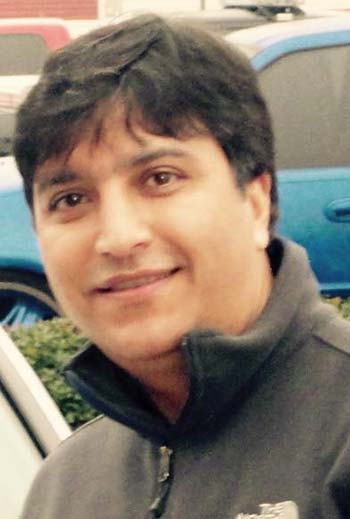Love for research took a Sopore born scientist to one of the best laboratories in America where he toiled hard to unearth the genetic behaviour, reports Saima Rashid
 In ever-evolving scientific world, fascinating experiments keep altering the outlook of human life. One such experiment happened recently when a Kashmiri born scientist in America used yeast, a unicellular organism known to be used in bread and beverage preparation, as a tool to test human genes.
In ever-evolving scientific world, fascinating experiments keep altering the outlook of human life. One such experiment happened recently when a Kashmiri born scientist in America used yeast, a unicellular organism known to be used in bread and beverage preparation, as a tool to test human genes.
The experiment was done by Dr Ashiq Hussain Kachroo along with his other post doctoral researchers, at University of Texas (Austin). The team carried out a lauding experiment on Baker’s yeast and transformed this single-celled organism to behave more like humans at a molecular level by a process called “humanisation of yeast”.
“This is something happening for the first time,” said Dr Hussain. “Scientists can now put a human gene in yeast cell to check if it will work well in yeast and moreover can tell us, if a certain human gene causes a disease, then you can simply try a specific drug for that disorder without affecting the other pairs.”
A son of retired teachers, Dr Hussain was born and brought up in north Kashmir’s Sopore. During his school days at Sopore’s Iqbal Memorial Public School, he was more into physics and chemistry, and less into biology. “It may sound strange, but biology never interested me,” he said. “But see the fate; I am now a scientist of molecular biology. I mean, you never know, when and where your interest shifts.”
After passing his class 12 in medical stream, he appeared in JKCET but was selected on payment seat. “My father wanted me to be a doctor,” he said, “and I was simply following his words, but getting admission on payment seat wasn’t acceptable to me. So, I gave up and joined Govt degree college Sopore for Bachelors instead.”
For the next three years, Dr Hussain was battling to give direction to his life. The confusion prevailed till he reached Kashmir University for pursuing Masters in Biochemistry and ended up meeting his mentor Dr Khursheed Iqbal Andrabi, the incumbent Vice Chancellor of the varsity. “He (Dr Andrabi) actually taught us (students) research not books,” he said. “University was fun. We used to have picnics every year outside Kashmir to visit scientific labs.” During one such trip, he visited IISC (Indian Institute of Science) Bangalore.
IISC Bangalore was his dream institute to pursue his PhD from, as some heavyweight scientists like CV Raman, CNR Rao, G Padmanabhan and others were part of it. To clear his doctoral decks, he appeared in All India level entrance test and availed a research slot in IISC. “The place is full of science,” he said, “it enhanced my scientific aptitude.”
It was at IISC, Dr Hussain started making forays in US universities for post doctorate. And the moment his PhD paper in molecular biology was published, it was ranked 19th worldwide and 8th in US.
Once out of IISC, he wanted to do research in Genome Engineering and Synthetic Biology. It was in the same quest, he secured a chance to do his post doctorate from University of Texas at Austin, where he started his research project with Dr Edward M Marcotte, Prof molecular sciences and co-director centre and systems of synthetic biology, in Oct 2010.
And with that begins the five year journey to experiment and publish “humanisation of yeast project”.
The basis behind the experiment was the assertion that humans in no way look like yeast but share thousands of genes with yeast cells. Dr Hussain said they are recognizable and this is because a billion years ago, “we had a common ancestor and we would like to know if their genes work the same way like ours. And for that, we carried out this experiment.”
To perform the experiment, they created hundreds of genetically engineered strains of yeasts, called humanised yeast. Each strain had a disabled yeast gene and a human version of the gene that they could either turn on or off. The human gene acted like a “kill switch”. “And if one turns off the human gene, the cell would die. If we would turn on the human gene, we would see if it is capable of living on active human gene,” he said.
For each gene pair, they tested with the human gene on and off. And with control groups, they were sure of the tests. They tested each pair of gene in three different ways. All of that added to thousands of mini experiments for about four years. The researchers found that half of the 450 yeast genes could grow and reproduce with just the human version. All the human genes roughly around 450 were obtained from Harvard University generated collection.
“We had over 30 news reports on this publication and top US journals published them, like Discovery News, Science daily, MeteoWeb (in Italian), NBS News, Washington Post and many more,” Dr Hussain said. “This was a crazy experiment. I had no idea whether it would be a complete failure or success. But, it was a great success.”
















brilliant article by a very talented journalist
Proud to be Soporian .May Allah makes more scientists like Dr Kichroo in Sopore.Nice dr i grand salute u.Best of luck from by side